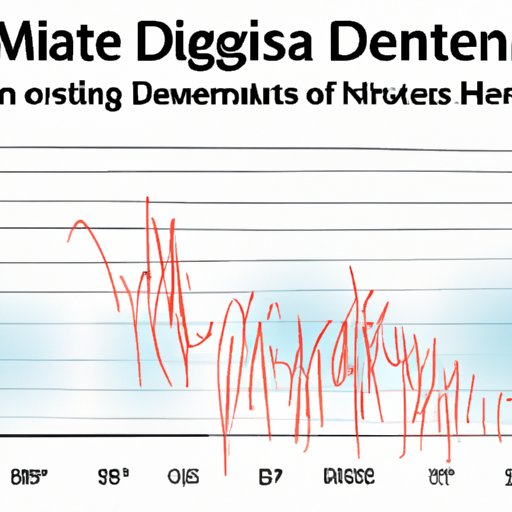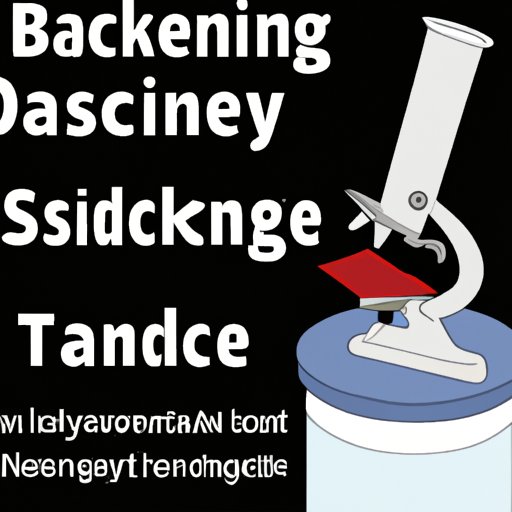Introduction
Science is an invaluable tool that has revolutionized our understanding of the world around us. By conducting rigorous experiments and carefully observing the results, scientists have made incredible discoveries that have improved our lives in countless ways. But not all scientific knowledge is created equal. In fact, there are many examples of what is known as “bad science” – research that is flawed or unreliable, and which could potentially lead to inaccurate conclusions.
At its most basic level, bad science is any scientific study that fails to meet accepted standards for quality and accuracy. This includes studies with poor design, unsupported theories, pseudoscience, quackery, biased research, misinterpreted data, and junk science. In this article, we will explore each of these categories in more detail and examine some of the potential consequences of bad science.
Examining the Impact of Poorly Designed Studies
One of the most common types of bad science is a poorly designed study. These are studies that fail to take into account important factors, such as sample size or control groups, which can lead to inaccurate results. Poor study design can also introduce bias and create a situation where the researcher’s expectations influence the outcomes.
There are a number of factors that can contribute to a poorly designed study. For example, a researcher may fail to use a control group when testing a new treatment, or they may not adequately randomize their sample. In addition, a researcher may be using outdated methods or techniques, or they may be relying too heavily on subjective measures rather than objective ones.
A famous example of a poorly designed study is the 1970s experiment by Stanley Milgram, which tested people’s willingness to obey authority figures. In the study, participants were asked to administer increasingly powerful electric shocks to another person if they failed to answer questions correctly. While the results of the study were interesting, the methodology was widely criticized for being unethical and lacking in safeguards to protect the participants from harm.
Exploring the Flaws in Unsupported Theories
Another type of bad science is an unsupported theory. This is a hypothesis or idea that cannot be verified through evidence or experimentation. Unsupported theories often rely on speculation or assumptions rather than facts, and they can lead to false conclusions.
When evaluating an unsupported theory, it is important to look at the underlying assumptions. Are they based on sound evidence? Are they consistent with other established theories? Are they logically consistent? If not, then the theory should be viewed with skepticism.
An example of an unsupported theory is the notion that vaccines cause autism. This theory was first proposed in 1998, but since then numerous studies have failed to find any link between the two. Despite this, the theory continues to be espoused by some, despite the lack of evidence to support it.
Investigating Pseudoscience and Quackery
Pseudoscience and quackery are two related forms of bad science. Pseudoscience is any practice that pretends to be scientific but does not adhere to the scientific method. Quackery is any form of medical treatment that has no basis in science or medicine.
Examples of pseudoscience include astrology, homeopathy, and faith healing. These practices make claims that cannot be scientifically proven, and they often rely on anecdotal evidence or personal experience to make their case. Quackery, on the other hand, involves treatments that are not supported by scientific evidence, such as crystal therapy, magnetic healing, and herbal remedies.
Analyzing Examples of Biased Research
Biased research is another form of bad science. This occurs when a researcher’s beliefs, attitudes, or preconceived notions influence the outcome of a study. This can lead to inaccurate or incomplete results, as well as skewed interpretations of the data.
There are a number of factors that can contribute to biased research. Researchers may be influenced by their own biases, or those of their sponsors or colleagues. They may also be tempted to cherry-pick data or only report results that support their hypothesis. In addition, researchers may be tempted to use certain methods or techniques that favor one result over another.
One example of biased research is the work of Andrew Wakefield. In 1998, he published a paper claiming to show a link between the measles, mumps, and rubella (MMR) vaccine and autism. However, subsequent investigations found that Wakefield had manipulated his data and omitted key information in order to support his conclusion.

Highlighting the Dangers of Misinterpreted Data
Misinterpreted data is another form of bad science. This occurs when a researcher draws the wrong conclusion from their data, either due to a misunderstanding of the results or an error in the analysis. This can lead to inaccurate or misleading conclusions about a topic.
There are a number of factors that can contribute to misinterpreted data. A researcher may be unaware of certain factors that could influence the results, or they may not have a deep enough understanding of the data to draw accurate conclusions. In addition, researchers may be tempted to draw conclusions that fit their preconceived notions or agendas.
An example of misinterpreted data is the 2012 study by John Ioannidis, which sought to compare the effectiveness of various cancer treatments. The results of the study showed that some treatments appeared to be more effective than others, but subsequent analyses revealed that the data had been misinterpreted due to errors in the statistical analysis.

Debunking the Myths of Junk Science
Junk science is another form of bad science. This refers to research that is conducted without any real scientific merit, often for the purpose of promoting a certain agenda. Examples of junk science include studies conducted solely for publicity purposes, or those funded by special interest groups with a vested interest in the outcome.
It is important to be aware of the potential pitfalls of junk science. For example, studies conducted for publicity purposes may be conducted quickly and without proper oversight, leading to inaccurate results. In addition, studies funded by special interest groups may be biased towards a specific outcome.
One example of junk science is the research conducted by tobacco companies in the 1950s and 1960s. During this time, tobacco companies funded numerous studies that sought to downplay the health risks associated with smoking. The studies were conducted without any real scientific merit, and the results were used to promote a specific agenda.

Examining the Consequences of Bad Science
The consequences of bad science can be serious. Poorly designed studies can lead to inaccurate results, while unsupported theories can lead to false conclusions. Pseudoscience and quackery can lead to ineffective treatments, while biased research can lead to skewed interpretations of the data. Finally, misinterpreted data can lead to erroneous conclusions about a topic.
In some cases, bad science can have serious implications. For example, the antivaccination movement has been linked to outbreaks of preventable diseases, such as measles and whooping cough. In addition, the misinterpretation of data has led to the widespread adoption of certain treatments that have been found to be ineffective or even harmful.
Conclusion
Bad science is any scientific study that fails to meet accepted standards for quality and accuracy. This includes poorly designed studies, unsupported theories, pseudoscience, quackery, biased research, misinterpreted data, and junk science. The consequences of bad science can be serious, ranging from inaccurate results to ineffective treatments.
In order to avoid bad science, it is important to critically evaluate any scientific study that you encounter. Look for flaws in the design, unsupported assumptions, and potential sources of bias. In addition, be wary of studies conducted solely for publicity or those funded by special interest groups. By taking these steps, you can help ensure that the scientific knowledge you consume is accurate and reliable.
(Note: Is this article not meeting your expectations? Do you have knowledge or insights to share? Unlock new opportunities and expand your reach by joining our authors team. Click Registration to join us and share your expertise with our readers.)
